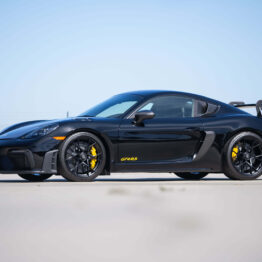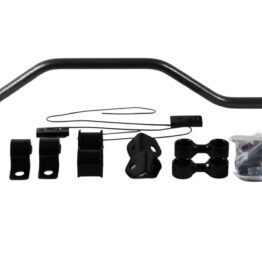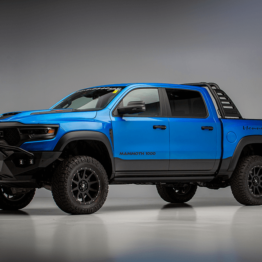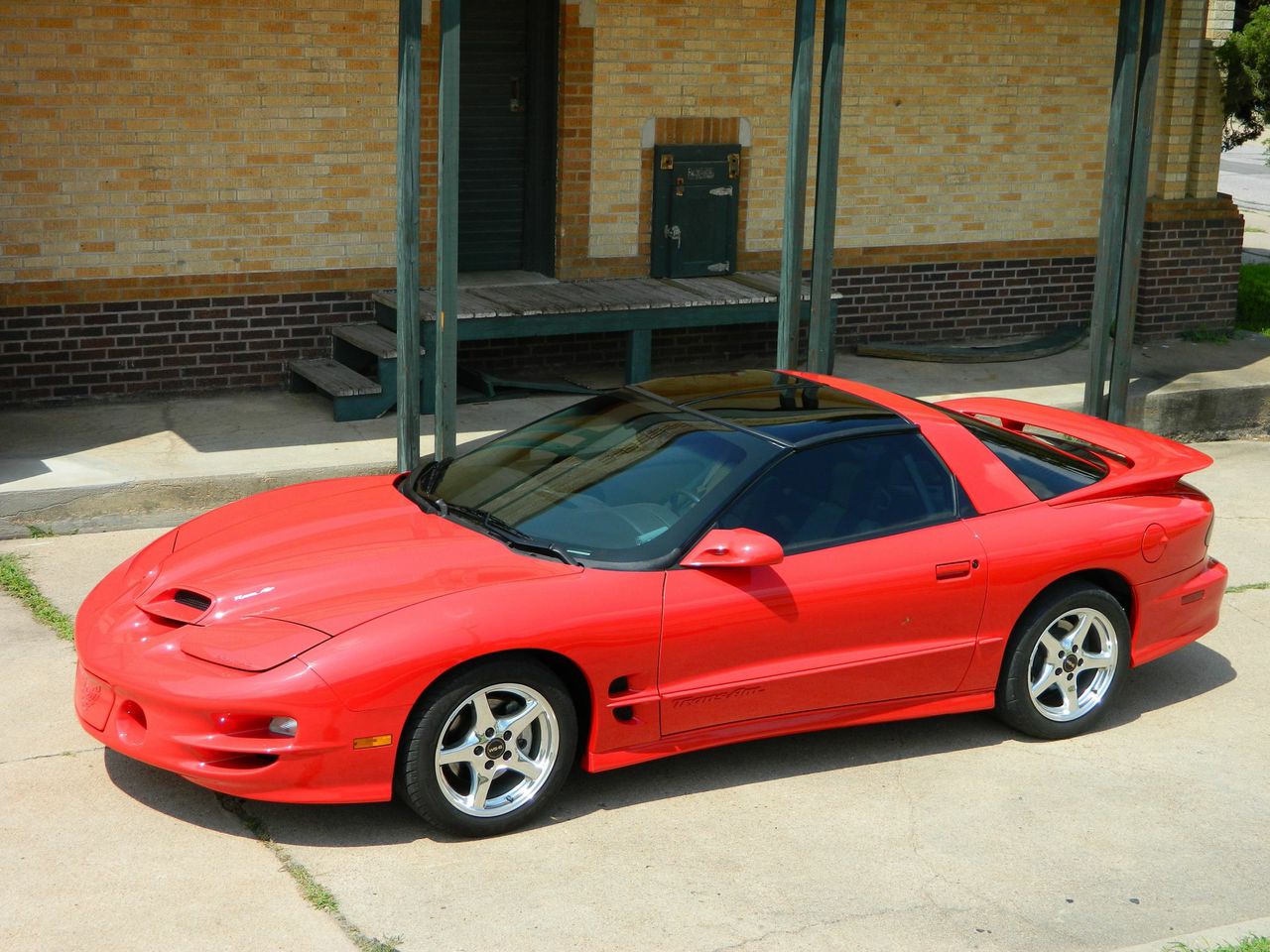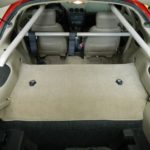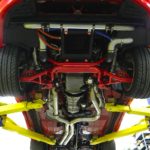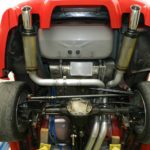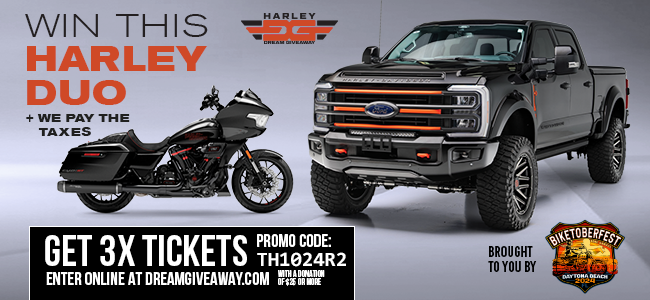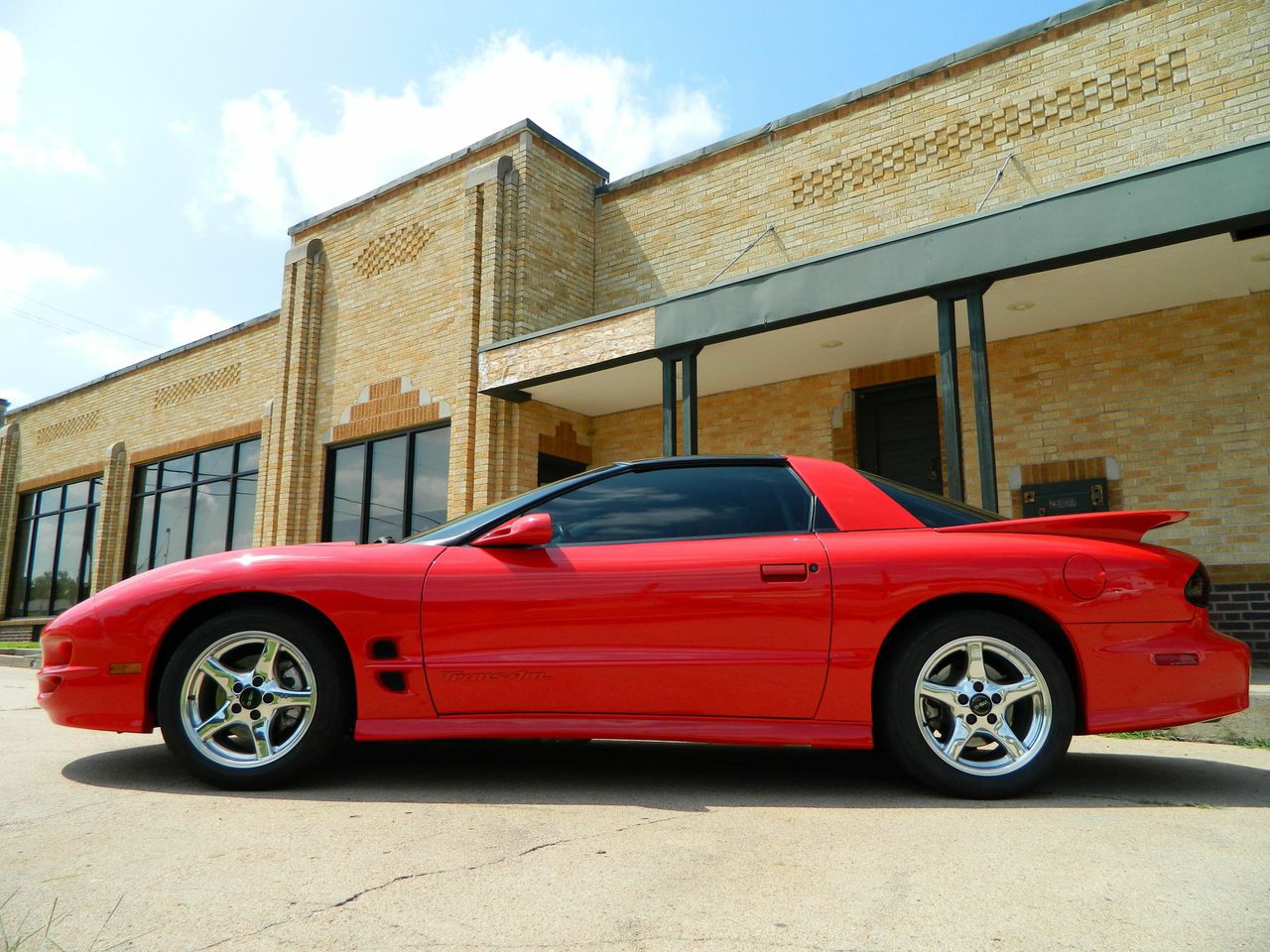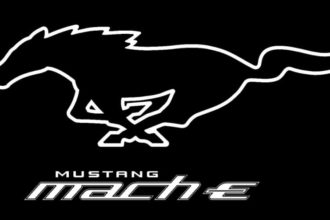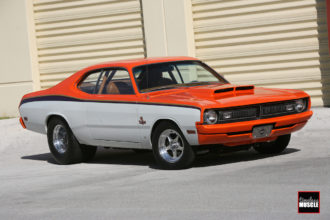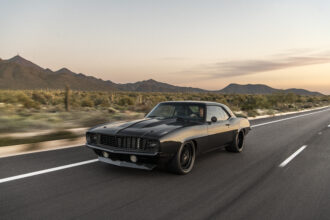Let me begin by saying your author loves F-Bodies, especially the 4th generation LS-powered WS6s, Firehawks, as well as the numerous dealer or tuner enhanced special edition cars. Anytime I get a chance to check one out I’m all over it. When I saw Chris Bernd’s bright red 2000 Trans Am WS6 entering Thunder Valley Raceway in Lexington, Oklahoma for the first day of the Oklahoma City Street Car Takeover dragstrip warfare, the first thing I noticed was how stock it looked. There were plenty of quick cars present, some of which had already made passes as low as mid-8’s. I knew this WS6 had more going than initially meets the eye.
Watching the WS6 pull into the burnout box reinforced my first impression, it seemed very stock. Only when the driver began his burnout did it start to reveal more of what was hiding within. I could hear some engine rumble at first, then finally, a faint whistle of the turbocharger. I should mention that Chris’s first pass was a solo pass. If there had been another car in the lane beside him, it’s very possible I wouldn’t have heard as much as I did. The car was considerably more quite than most of the vehicles that had previously made passes. The car launched and wheel spin was apparent in first and second. Third gear was a little better, but only after grabbing fourth gear did things really get moving. By the end of the run it posted a speed in the upper 140 mph range in the quarter-mile. I tracked the car down in the pits to checkout its set up.
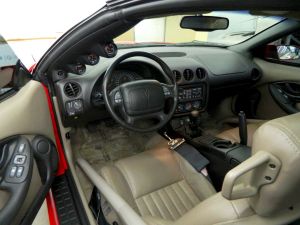 Visually the car looked factory down to the wheels. The only thing really noticeable was the 315/35 Mickey Thompson ET Streets on the rear of the car. Taking a look under the hood revealed an engine bay with almost all of the factory shrouding, as well as air conditioning and the washer fluid tank still in place. The battery and core support brace were in their factory locations as well. The only indication was the intake tube that ran toward the driver’s side and down out of sight just behind the headlight. On any other car this might be dismissed a as a cold-air intake tube ran to an opening in the bumper cover, but on this Trans Am, it was the intake tube of a forced-inducted engine. Tucked nicely under the engine was a CBR Performance Products LS F-Body Twin Turbo system.
Visually the car looked factory down to the wheels. The only thing really noticeable was the 315/35 Mickey Thompson ET Streets on the rear of the car. Taking a look under the hood revealed an engine bay with almost all of the factory shrouding, as well as air conditioning and the washer fluid tank still in place. The battery and core support brace were in their factory locations as well. The only indication was the intake tube that ran toward the driver’s side and down out of sight just behind the headlight. On any other car this might be dismissed a as a cold-air intake tube ran to an opening in the bumper cover, but on this Trans Am, it was the intake tube of a forced-inducted engine. Tucked nicely under the engine was a CBR Performance Products LS F-Body Twin Turbo system.
Anyone who has looked under the hood of a 4th-generation F-Body knows extra space is not something abundantly available. Imagine trying to package two turbochargers, an intercooler, intake and exhaust piping, as well as many other components needed for a twin-turbo system under the 4th-generation hood. Now imagine doing that without moving things like the battery or fuse box, or deleting them all together (like air conditioning or the washer fluid system), all while trying to preserve factory cooling airflow. Chris Bounds of CBR Performance Products, along with Rob Josvai of Modular Turbo, had clear cut criteria for the system to be designed. Chris stated, “I drew a line in the sand so to speak when I set out to build this kit.”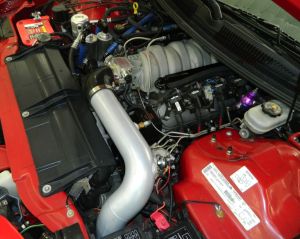
He continued, “Priority number one was not alter the stock cooling system in any way, shape or form or to obstruct the air flow through the cooling system. This is critical for a “street car” that you can drive everyday like it was stock.” One of the key components to achieving this was the use of an air to water intercooler. This relieved the need to cut holes in the factory bumper cover to accommodate an intercooler core, which kept factory air flow to the radiator.
“Priority number two: The kit would need to be able to accept T4 turbos. This opens the door for any power needs the customer requires, from a stock motor up to a 1300-1400 hp monster.” A specialized K-member was designed to accommodate the range of turbochargers needed to achieve the specified performance goals. “I tried to use other K-members only to find myself boxed in with no way out in one form or another. So I set out to build my own K-member to allow me to build a kit with no compromises. I built four different K-members before we ended up with the version used now. Each one brought me a little closer to my goals. I would make changes, redraw parts in CAD, send them out for quotes and wait for 2-3 weeks on this new batch of parts. Only to run into new road blocks and throw those parts away and start over with new changes.”
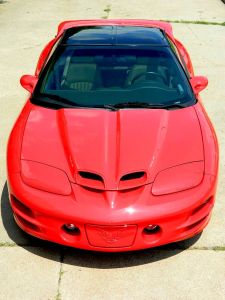 The F-body retains stock suspension characteristics while increasing handling and integrating turbocharger intake piping. “Our K-member has been designed from the ground up to provide not only the necessary room for two turbochargers and wastegates but also to increase chassis stiffening in order to provide better handling. There are no modifications to the stock suspension geometry. The sway bars are uninhibited. The rear lower control arm mounting points have been fully boxed in for increased rigidity and handling. Our innovative integration of turbocharger intake tubes not only maximizes room for large turbocharger upgrades but also prevents the intake tubes from sucking shut under high boost conditions a common problem with many other twin turbo systems.”
The F-body retains stock suspension characteristics while increasing handling and integrating turbocharger intake piping. “Our K-member has been designed from the ground up to provide not only the necessary room for two turbochargers and wastegates but also to increase chassis stiffening in order to provide better handling. There are no modifications to the stock suspension geometry. The sway bars are uninhibited. The rear lower control arm mounting points have been fully boxed in for increased rigidity and handling. Our innovative integration of turbocharger intake tubes not only maximizes room for large turbocharger upgrades but also prevents the intake tubes from sucking shut under high boost conditions a common problem with many other twin turbo systems.”
“Priority number three: Maintenance shouldn’t be any more difficult than a stock car.” Accomplishing this would mean utilizing components that would complement each other as well as the car it would be installed on. Chris Bernd, the owner of his own cylinder head business, Cylinder Head Specialties, built the 6.0-liter iron block engine himself. It has a 3.75” stroke custom crank combined with 6.200” Carrillo connecting rods topped with 4.005” custom CP pistons with steel rings. The heads are in-house ported 317s, and valve actuation is controlled by a custom Bullet cam with 238/237 duration.
A FAST 90mm intake takes in air from twin Turbonetics ball-bearing 6165 turbochargers. Exhaust gasses, post turbine side, are sent through a CBR-built exhaust system consisting of true dual 3” aluminum piping, with an X-pipe, to dual Magnaflow 5-inch mufflers and out of Magnaflow tips. “The exhaust does have an “X-pipe,” but it wasn’t for the sake of scavenging which can not happen on a turbo car, it was to help make a cleaner sound.
It works because there is no drone or anything in the car.” Your author can attest to that. The combination of turbochargers and exhaust design really kept the car quiet. At idle and a slow roll the car sounded as if it only had an aftermarket catback exhaust and maybe a small cam. Cruising at highway speeds there was no drone, rasp, or resonance. Even under full throttle the car wasn’t obnoxious. It had a nice aggressive roar without splitting eardrums.
This combination was tuned by Chris Lovett at Wichita Dyno, on a stock computer and E85, to produce 1,026 rear wheel horsepower at 17-pounds of boost. Extra care was taken in the tuning of the car to ensure proper operation under all conditions. Chris Bernd remarks; “They really went above and beyond to get this to run and drive like stock even with the A/C on.” This is a stark contrast to many “head and cam” cars we have encountered over the years that wouldn’t run quite right when cold or, the A/C wouldn’t work until highway speeds because the tune wasn’t correct.
Backing the four-digit powerplant is a Tick Performance Level-5 TR6060 Super Magnum transmission. “It’s TR6060 gears that have been micro polished and cryogenically treated inside a T-56 Magnum case with an internal spray oiler with an external pump.” This lubricates the front bearing under acceleration and is set to come on at four-pounds of boost. Transferring power from the engine to the transmission is a McLeod twin-disk clutch. This combination sends power to a Moser 12-bolt rear axle with 3.55 gears.
Suspending the twin-turbo Trans Am at the front are BMR lower control arms, bolted to the CBR K-Member with AFCO 10-way adjustable shocks. At the rear, factory WS6 shocks are combined with a BMR torque arm with custom transmission mount. A different CBR twin-turbo equipped car, producing less power, destroyed the mount where the arm connects to the transmission while launching at the track. To keep that from happening with Chris’s car, a custom transmission brace with integrated torque arm mount was utilized. This moves the mount from the tail of the transmission to the transmission brace. CBR Performance made a custom Panhard drop bracket for the BMR Panhard bar to clear the true 3-inch dual-over-the-axle exhaust.
Going for a ride in the car showed how well-behaved the combination was. During around-town cruising, the A/C blew cold and the engine never skipped a beat. No hiccups or stumbles in the tuning or over heating issues. We’ve already mentioned the lack of drone or rasp in the exhaust note. Carrying on a conversation or listening to the radio was no problem. On the highway it was more of the same, RPM we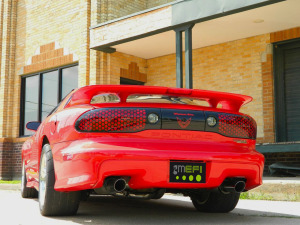 re steady and smooth. When given more aggressive throttle, first and second gear had prominent wheelspin.
re steady and smooth. When given more aggressive throttle, first and second gear had prominent wheelspin.
Wheelspin in third wasn’t as bad but a little fishtailing was noticed. Once fourth was hit, it gripped harder and shot off in a smooth solid push easily planting driver and passenger into the seat. Letting off the gas brought a little blowoff sound from the wastegates, nothing too loud as the wastegates are vented back into the exhaust.
Chris Bernd has built a strong street car utilizing a well thought out twin-turbo system brought to fruition by a couple of guys that wouldn’t settle for less. Chris from CBR remarks, “Rob of Modular Turbo played a big role in this. We are lucky to have a customer like Chris Bernd and tuner like Chris Lovett of Wichita Dyno to bring out the potential of the kit.” Chris Bernd plans to return to the track with slicks in search of quicker E/T’s. Having personally witnessed multiple 140+ mph passes, it’s obvious the power is there. Once more traction is found, quicker times will come.
Since this feature was first written, Chris has ran a best of 9.96 @ 140mph, with a 1.43 60-ft. on 10psi. The engine will be pulled and inspected during the off season and when it goes back in, it will have a Turbo 400 automatic transmission behind it. Next season Chris is hunting 8-second passes, which should be no problem given the potential the car has already shown.
TECH SHEET:
- CAR: 2000 Trans Am WS6
- OWNER: Chris Bernd
- ENGINE BLOCK: LQ4; iron block
- CRANKSHAFT: Stock LQ4
- CONNECTING RODS: Carrillo; 6.200
- PISTONS: CP
- CAMSHAFT: Custom grind 238/237 .607/.598
- CYLINDER HEADS: Cylinder Head Specialties-ported 317 castings
- COMPRESSION RATIO: 9.8:1
- INDUCTION: FAST 90mm intake manifold w/Nick Williams 90mm TB
- POWER ADDER: Turbonetics 6165 ballbearing (x2)
- WASTEGATE: Twin 38mm
- BOOST: 17-psi.
- IGNITION: Stock coil-near plug; truck coils
- EXHAUST: custom true-dual
- FUEL DELIVERY: Custom aluminum fuel cell in stock location with MagnaFuel 4303 in-tank pump, ID2000 injectors
- OILING: Factory wet sump oiling with Mellings HV pump
- TUNING: Chris Lovett of Wichita Dyno
- TRANSMISSION: TR6060; built by Tick Performance
- CLUTCH: McLeod, twin-disc
- DRIVESHAFT: Local Bad Steel w/billet Strange yoke
- REAREND: Moser 12-bolt, 3.55 gears
- SUSPENSION (front): BMR lower control arms, sway bar, Afco 10-way adjustable struts
- SUSPENSION (rear): BMR lower control arms, sway bar, Panhard bar, torque arm, Afco 10-way adjustable shocks
- CHASSIS MODS: CBR K-Member, subframe connectors, rear lower control arm
- BRAKES: Stock
- WHEELS (street): OEM WS6; 17×9-inch (front), 17×10.5-inch (widened, rear)
- WHEELS (‘strip): Bogart 15×4.5 (front), 15×10 (rear)
- TIRES (street): Goodyear 275/40/17 (front), Mickey Thompson Drag Radials 315/35/17 (rear)
- TIRES (‘strip): 26x 4.5x 15 skinnies (front), 26x10x15 slicks (rear)
- HP/TQ.: 1,026/896
- BEST 1/4-MILE ET: 9.96 @ 142 mph
- BEST 60-ft.: 1.43
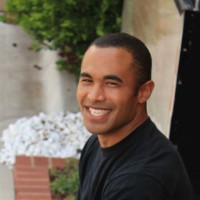
At just 5-years old, it was an ’85 IROC-Z Camaro that ignited the fuel that sparked the life-long passion of GM hardware for Michael. Being a huge fan of late-model muscle in general, the LS-powered 4th-generation Firebirds truly capture Michael’s heart.

